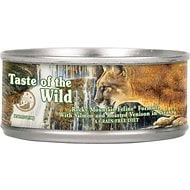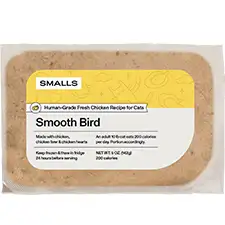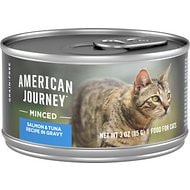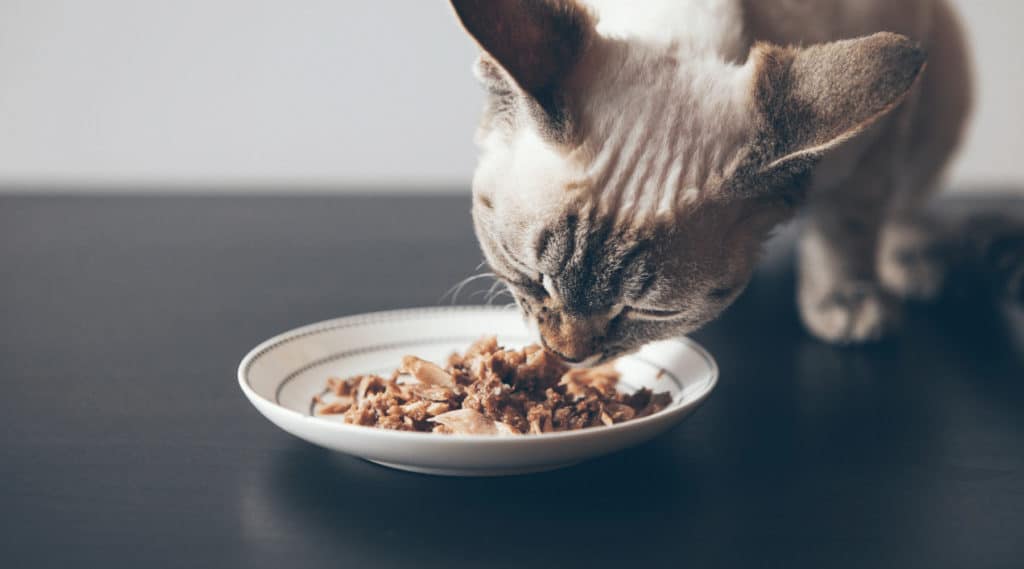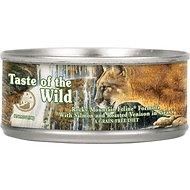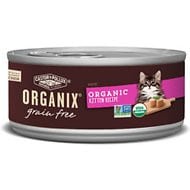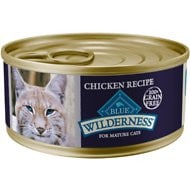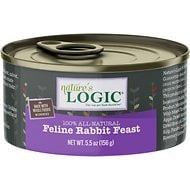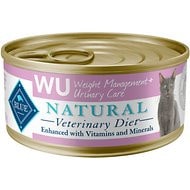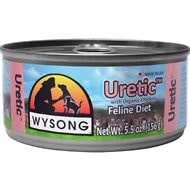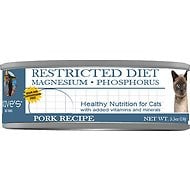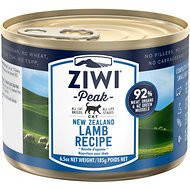Contents
- What Is The Best Cat Food Without Ash?
- What is Ash in Pet Food?
- The Significance of Ash Content in Cat Food
- Can You Calculate Ash Content Yourself?
- What Should You Look for in a Healthy Cat Food?
- How Do We Make Cat Food Recommendations?
- The 10 Best Cat Foods Without Ash
- Smalls Smooth Bird Fresh Human Grade Cat Food Delivery
- Taste of the Wild Rocky Mountain Grain-Free Canned Food
- American Journey Minced Salmon & Tuna Recipe Canned Food
- Castor & Pollux Organix Grain-Free Organic Kitten Recipe
- Blue Buffalo Wilderness Mature Chicken Recipe Canned Food
- Nature’s Logic Feline Rabbit Feast Canned Food
- 4 of the Best Cat Foods for Urinary Tract Health
- Frequently Asked Questions
When you’re reading a pet food label, you probably look for the big things like protein content, whole food ingredients, and calorie content. As you scan through the guaranteed analysis to check for adequate levels of protein, fat, and moisture, however, you may come across something surprising: ash.
Seeing the word ash on your cat’s food label can be unsettling. Cat food manufacturers have been known to add some shady ingredients, but why on earth would they add something like that?
The truth is that ash is not an ingredient added to cat food. It is actually a measure of the essential minerals in the cat food. In this article, we’ll talk about ash in cat food to determine exactly what it is and its role in your cat’s urinary health. You’ll also learn what you need to look for in a healthy cat food and see our top picks for the best low ash cat food.
What Is The Best Cat Food Without Ash?
- Smalls Smooth Bird Human-Grade Cat Food – Healthiest!
- Taste of the Wild Rocky Mountain
- American Journey Minced Salmon & Tuna
- Castor & Pollux Organix Grain-Free
- Blue Buffalo Wilderness Mature Chicken
- Nature’s Logic Feline Rabbit Feast Canned
- Blue Buffalo Natural Veterinary Diet
- Wysong Uretic with Organic Chicken
- Dave’s Pet Food Restricted Diet
- Ziwi Peak Lamb Recipe Canned Food
What is Ash in Pet Food?
When you see the word “ash” on the guaranteed analysis in your pet’s food, you may be concerned.
The guaranteed analysis is where the manufacturer lists guaranteed minimums or maximums for key nutrients like protein, fat, fiber, and moisture. These minimums are based on food nutrient profiles established by the Association of American Feed Control Officials (AAFCO) based on extensive feeding trials in cats and dogs.
AAFCO requires manufacturers to list the crude protein, fat, fiber, and moisture content on the guaranteed analysis measured as fed (as opposed to dry matter). Anything else is up to the manufacturer’s discretion to include or omit.
But what is ash really?
Many pet owners mistakenly assume that ash is a filler used to add bulk to low-quality pet foods. In reality, it is simply a measure of the mineral content of the food. Manufacturers are able to measure the mineral content by burning the food – the organic material (the protein, fats, and carbohydrates) burn off, leaving behind the inorganic minerals. This is known as ash.
In most cases, ash in pet food comes from animal bone, cartilage, and tendons. Fresh meat contains only the flesh of the animal but meat meals like chicken meal and beef meal may contain bone. Synthetic mineral additives can also contribute to the ash content.
The Significance of Ash Content in Cat Food
Though ash isn’t a filler or questionable pet food additive, it’s still something to pay attention to. Higher levels of ash in pet food may indicate a more significant reliance on synthetic mineral supplements (versus natural sources). It could also indicate lower quality for the meat inclusions. Low-quality meat meals like unnamed meals (poultry meal or meat meal) as well as by-product meals are lower in quality than named meals like chicken meal.
Generally speaking, the lower the ash level the higher the quality of the food. But not all ash is bad.
Cats and dogs have minimum requirements for certain minerals, so you should expect your cat’s food to have some level of ash. The ideal ash content in cat food is about 2% – anything higher may not provide measurable benefits for your cat’s health. Unfortunately, most commercial dry foods contain about 7%.
When a pet food manufacturer chooses to include ash in the guaranteed analysis, it often has to do with feline urinary tract health.
In the 1970s and 1980s, researchers identified a correlation between high levels of ash in pet food and urinary tract conditions – specifically, urinary crystals. Urinary crystals are simply collections of minerals in the bladder and urinary tract that irritate the bladder and have the potential to cause a blockage. More recently, however, the issue has been attributed to alkaline pH in the urine which leads to an increase in struvite crystals formed from magnesium, phosphorus, and ammonium.
Though some cat food manufacturers market their products as low ash to appeal to someone looking for the best cat food for urinary crystals, research no longer supports the theory that ash directly influences urinary crystal formation. Urinary pH is a more significant factor.
If your cat has urinary issues, you would do better to look for a high protein diet. Cat food with higher protein content and lower carbohydrate content is optimal to maintain proper urine pH. If you’re not worried about urinary issues, however, you can simply use ash content as one of several factors to judge the quality of a commercial cat food product.
Can You Calculate Ash Content Yourself?
If you want to shop for a low ash cat food, you may want to know how to find ash content in cat food. If it isn’t listed on the guaranteed analysis, however, you probably won’t be able to determine the exact amount. You would have to perform a scientific experiment to burn the cat food yourself and measure the leftover inorganic material. Because this is unlikely, you should assume an average of about 7% ash in most commercial dry foods and about 2.5% in wet foods.
Sometimes cat food manufacturers want to advertise that their product is a low ash cat food. If the ash content listed on the guaranteed analysis is under 8%, it is generally considered a low ash cat food. Keep in mind, however, that this applies to dry food only – wet food should have no more than 3% ash.
Though it doesn’t do you much good to know how to calculate ash in cat food, you can get a rough calculation of the carbohydrate content. This can help you determine whether one product might have a more significant impact on urinary pH than other.
To calculate the carbohydrate content, simply add up the protein, fat, fiber, moisture, and ash content and subtract from 100 to get a rough percentage. If the ash content isn’t listed, assume 7% for dry food and 2.5 or 3% for wet food.
What Should You Look for in a Healthy Cat Food?
Now that you understand the significance of ash in cat food, you will know what it means when you see it on a guaranteed analysis. You should be mindful of the ash content of your cat’s diet, but it’s more important to choose a recipe that will provide for your cat’s nutritional needs.
But what exactly should you be looking for? Here’s what to look for in cat food:
- Real animal protein as the first ingredient. Cats require a high protein diet and animal proteins are more digestible and nutritionally valuable than plant proteins. Real meat, poultry, and fish are the best sources so look for things like deboned beef, chicken meal, or fresh salmon as the first ingredient. If you want to limit ash, choose fresh animal proteins instead of meat meals.
- Healthy animal-based fats. Like proteins, animal fats are more biologically valuable for your cat. Chicken fat may sound gross but it’s actually very nutritious for your cat. Look for a balance of omega-3 and omega-6 fatty acids in your cat’s food.
- Limited content of digestible carbohydrates. Cats have a limited ability to digest plant products, so keep the carb content of your cat’s diet low. If you’re concerned about urinary health problems, a high protein and low carb diet can help prevent your cat’s urine from becoming too alkaline and supporting crystal formation.
- Natural sources for key nutrients. Your cat has minimum requirements for vitamins and minerals, but they are most valuable from natural sources like whole grains and vegetables. A long list of synthetic minerals generally implies higher ash content, so check for that as well.
- Complete and balanced nutrition. Anything you feed your cat should be nutritionally balanced, so check for the AAFCO statement of nutritional adequacy on the label.
How Do We Make Cat Food Recommendations?
We have many years of experience evaluating pet foods and even more experience as cat owners. That being said, we know a little more than the average cat owner about pet nutrition and comparing commercial pet foods. There are limitations to our knowledge and understanding, but we want you to know that we’d never recommend a product to you that we wouldn’t be happy to feed our own cats. We do our best to choose high-quality products that exceed your cat’s minimum nutritional needs.
Here are some general requirements for a cat food recipe to receive our stamp of approval:
- A source of high-quality animal protein as the first ingredient
- At least 30% crude protein for kittens and at least 26% for adults
- A minimum of 9% crude fat for kittens and adults
- A balance of omega-3 and omega-6 fatty acids, primarily from animal sources
- A rich blend of nutrients from natural sources and supplements, as needed
- Limited carbohydrate content from digestible sources (like whole grains and veggies)
- No low-quality fillers, by-products, or artificial additives (preservatives, dyes, or flavors)
You should always feed your cat the highest quality cat food you can consistently afford. You don’t necessarily need to bankrupt yourself by buying the best of the best, but your cat deserves the highest quality food you can buy him on a consistent basis.
The 10 Best Cat Foods Without Ash
There is no such thing as an AAFCO-approved commercial cat food without ash. If there was no ash, it would mean there were no minerals and the product wouldn’t meet AAFCO minimums. Keep in mind that some products can get around these requirements by conducting a feeding trial instead of adhering to existing recommendations, but most manufacturers just follow AAFCO guidelines.
Though for the most part you can’t avoid ash in cat food, it doesn’t hurt to look for a product with low ash content. Low ash cat food is generally of higher quality than high ash cat food, especially if it contains a significant amount of animal ingredients (especially protein) with low carb content. These are the requirements we’re using to recommend the best cat foods without ash. Here are our top picks:
| Our 2024 Picks: Best Cat Foods Without Ash | |||
Smalls Fresh Human-Grade Cat Food
|
CHECK PRICE | ||
Taste Of The Wild Rocky Mountain Grain-Free
|
CHECK PRICE | ||
American Journey Minced Salmon & Tuna
|
CHECK PRICE | ||
Castor & Pollux Organix Grain-Free
|
CHECK PRICE | ||
Blue Buffalo Wilderness Mature Chicken
|
CHECK PRICE | ||
Nature’s Logic Feline Rabbit Feast Canned Food
|
CHECK PRICE | ||
Blue Buffalo Natural Veterinary Diet
|
CHECK PRICE | ||
Wysong Uretic with Organic Chicken
|
CHECK PRICE | ||
Blue Buffalo Natural Veterinary Diet
|
CHECK PRICE | ||
Ziwi Peak Lamb Recipe Canned Food
|
CHECK PRICE | ||
Smalls Smooth Bird Fresh Human Grade Cat Food Delivery
Our Top Overall Pick: If you want to optimize your cat’s nutrition, fresh food is a great option to consider. Made with fresh, whole food ingredients, fresh food retains more of its original nutritional value than dry food which is cooked at high temperatures. Smalls is our favorite fresh cat food company and their products are a great fit if you’re looking for low ash cat food. None of their recipes (bird, other bird, beef, or fish) contain meat meals and the fact that their ingredients are fresh reduces the need for synthetic mineral additives. Plus, the higher moisture content supports urinary tract health.
Taste of the Wild Rocky Mountain Grain-Free Canned Food
Most Popular Low Ash Cat Food: Not only is Taste of the Wild one of the most popular brands on the market, but it’s also one we recommend. This Rocky Mountain recipe features fresh salmon as the main ingredient with fresh chicken, smoked salmon, and roasted venison for supplemental protein. It is rich in moisture and low in carbohydrates with limited content of mineral additives. Overall, it provides complete and balanced nutrition for kittens and adult cats.
American Journey Minced Salmon & Tuna Recipe Canned Food
Most Affordable Low Ash Cat Food: Good cat food can be expensive, but not all expensive cat food is good. This American Journey salmon & tuna recipe is a decent example of quality available at an affordable price. Made with salmon and tuna as the primary flavors, this recipe also contains chicken for added protein but doesn’t contain meat meals with added bone. It has limited content of added minerals and an estimated carbohydrate content less than 5%. Overall, it’s a nutritious recipe that’s easy for you to afford.
Castor & Pollux Organix Grain-Free Organic Kitten Recipe
Best Low Ash Kitten Food: Your kitten deserves the best start in life you can possibly give him. This organic chicken recipe from Castor & Pollux Organix is a great option because it’s packed with protein and essential nutrients to support growth and development. With fresh chicken as the main ingredient, this recipe doesn’t contain added bone to boost the ash content. It does contain added minerals, but these ingredients likely make up less than 1% of the total recipe. As a wet food, this recipe supports your kittens urinary health too.
Blue Buffalo Wilderness Mature Chicken Recipe Canned Food
Best Low Ash Senior Cat Food: Senior cats tend to prefer wet food because it is easier to chew. If you’re looking for a cat food with low ash or for urinary health, that’s an added bonus. This Blue Buffalo Wilderness Mature Chicken Recipe features fresh chicken as the main ingredient and doesn’t contain sources of added bone. Overall, it has an estimated carb content no higher than 6.5% as fed and it is formulated for senior cats in particular.
Nature’s Logic Feline Rabbit Feast Canned Food
Best Low Ash Cat Food for Sensitive Stomach: Aside from the Smalls recipes, this Nature’s Logic Feline Rabbit Feast is actually our favorite pick for low ash cat food. It contains a limited number of ingredients as well as a novel source of protein, so it’s also a great choice for cats with sensitive stomachs or allergies. What makes it optimal as a low ash cat food is the fact that it doesn’t contain added bone and is completely free from synthetic mineral additives. It relies on whole food ingredients to supply natural sources for key vitamins and minerals.
4 of the Best Cat Foods for Urinary Tract Health
If you’re looking for a low ash cat food specifically for urinary health issues, here are a few options:
Blue Buffalo Natural Veterinary Diet W+U Urinary Care Canned Food
Most of the veterinary diets on the market use hydrolyzed proteins and a significant amount of filler but this Blue Buffalo Natural Veterinary Diet W+U is different. It uses high-quality, natural ingredients including animal proteins like chicken, chicken liver, and whitefish. As a wet food, it has plenty of moisture to help dilute your cat’s urine and it doesn’t contain added magnesium, two factors that may help prevent crystal formation. Measured as dry matter, it contains 38% protein and 11% fat. The fat content is a little low for the average cat, but it is also intended as a weight management formula.
Wysong Uretic with Organic Chicken Canned Cat Food
Another recipe formulated for urinary health, this Wysong Uretic with Organic Chicken Canned Cat Food features organic chicken as the main ingredient. It contains a limited number of carbohydrate ingredients with an estimated carb content around 3%. It does contain synthetic mineral additives, but the fact that fresh chicken is the first ingredient and not chicken meal suggests that these supplements make up the majority of the recipe’s mineral content.
Dave’s Pet Food Restricted Diet Magnesium & Phosphorus Canned Food
If your cat struggles with struvite stones, this Dave’s Pet Food Restricted Diet Magnesium & Phosphorus recipe could be a good choice. In addition to being a moisture-rich wet food, it contains controlled levels of magnesium and phosphorus. This recipe contains fresh pork as the first ingredient with limited carbohydrate content. It also contains fewer added minerals than the average cat food. The fiber content on Chewy is listed at 11% which is much too high for cats, but Dave’s Pet Food website lists the product at 3% which is much more reasonable.
Ziwi Peak Lamb Recipe Canned Food
Though not specifically formulated for urinary health, this Ziwi Peak Lamb Recipe Canned Food could still be a good choice. It is rich in high-quality animal protein from fresh lamb and lamb organs. It does contain some lamb bone, but the calculated ash content is listed at just 3%. This recipe is very low in carbohydrates and the moisture content is high to help support urinary health. It is also completely free from grains and fillers to help prevent urinary tract inflammation.
Frequently Asked Questions
- Is ash a cat food filler? No. Though you might assume this to be so based on the name, ash is simply a measure of the mineral content of the cat food.
- Is ash in cat food a bad thing? The answer to this question isn’t a hard yes or no. Cats require about 2% ash in their diet simply to meet their minimum requirements for essential minerals. When cat food is extremely high in ash, it generally implies a higher inclusion of synthetic minerals and/or lower quality meat ingredients. For these reasons, high ash content is typically not a good thing, but some ash content is to be expected.
- What does low ash cat food look like? Low ash cat foods can look very different. If you want to shop specifically for cat food with low ash content, you can look for buzz words like urinary care or urinary tract health. Cat foods formulated for these issues typically have lower levels of minerals like magnesium and phosphorus to reduce the formation of struvite stones. Remember, however, that the science on this has changed since the 1980s and researchers now believe that urinary pH plays a bigger role in urinary health problems.
- What are the best cat foods for urinary tract health? The best cat food for urinary crystals generally has higher protein and moisture content to acidify the urine. Low ash cat food generally has less than 7% ash for dry food and 3% for wet food but remember that your cat’s actual requirements are closer to 2%. Instead of shopping for cat food supposedly formulated for urinary health, look for a high-quality wet food made with real animal proteins with limited carbohydrate content and not too many synthetic mineral additives.
- Is wet food better than dry food? Generally speaking, wet cat food is higher in protein and moisture content then dry cat food. This makes it a more appropriate diet for cats in general, though you still need to determine the quality of the product. Higher protein and moisture content are exactly what makes wet food a good choice for cats with urinary health issues. Urinary care wet food helps acidify urinary pH by diluting the urine with moisture and reducing the carb content (by increasing the protein content). Though dry foods for urinary problems do exist, the best cat food for urinary crystals is generally wet food.
You want what’s best for your cat, so you try to shop for cat food that will provide the key nutrients your cat needs without unnecessary extras. When shopping around, remember that some ash is necessary but high levels of ash don’t provide any nutritional benefit. In fact, high levels of ash can indicate overuse of synthetic mineral additives and lower quality proteins.
The issue of ash in pet food can be a confusing one and we don’t expect you to become a pet food expert overnight! If you’re concerned about your cat’s urinary health or simply want to find a more nutritious cat food, try one of our recommendations above!

